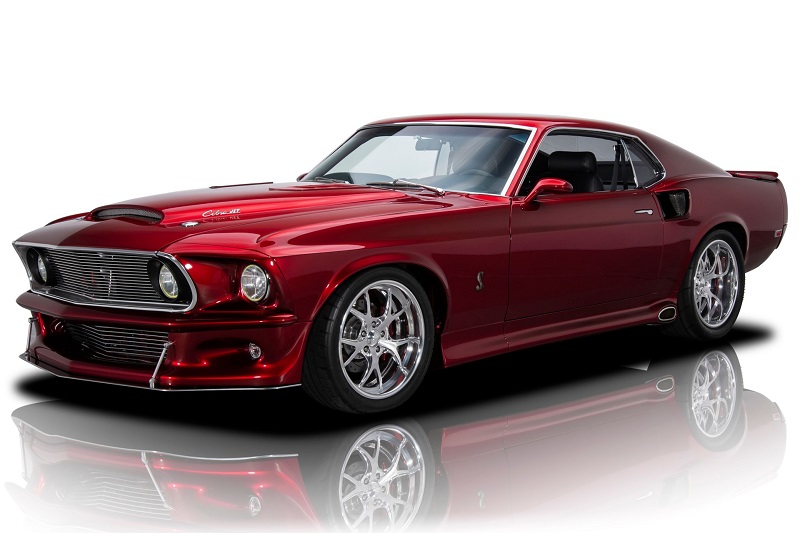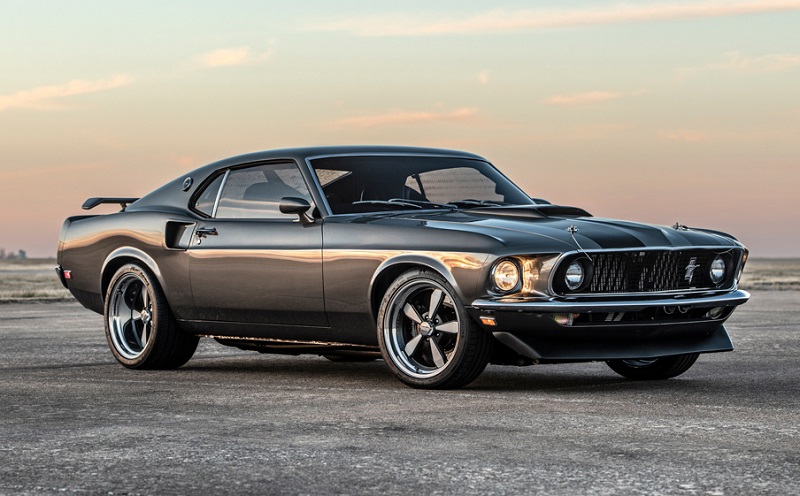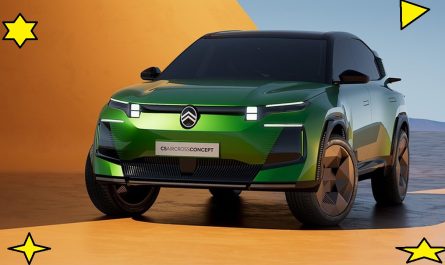One of the most recognizable muscle cars in automotive history is the 1969 Ford Mustang. This model, praised for its aggressive styling, potent performance, and important position in automotive culture, continues to be popular among auto aficionados worldwide. The main characteristics of the 1969 Mustang will be discussed in this article, along with its pricing in India at the time, engine choices, design elements, and influence on the worldwide car industry.
Read more: Toyota Harrier: A Comprehensive Overview
The Design of the 1969 Ford Mustang
One of the most recognizable muscle cars in automotive history is the 1969 Ford Mustang. This model, praised for its aggressive styling, potent performance, and important position in automotive culture, continues to be popular among auto aficionados worldwide. The main characteristics of the 1969 Mustang will be discussed in this article, along with its pricing in India at the time, engine choices, design elements, and influence on the worldwide car industry.

Notable design elements include:
- Front Fascia: Aggressive styling with deep-set headlights and a bold grille.
- Fastback and Convertible Options: The Mustang was available in coupe, fastback, and convertible versions, catering to different tastes.
- Sportier Features: The 1969 Mustang introduced more sporty features like hood scoops, rear spoilers, and aggressive side panels, which became hallmarks of the muscle car era.
The 1969 Mustang’s interior design continued to prioritize the comfort of the driver. The car’s opulent appeal was enhanced with leather seats, an uncluttered dashboard with readily accessible controls, and optional woodgrain paneling, especially in the more expensive models like the Mach 1 or Boss 429.
Engine and Performance Options
The 1969 Mustang came with a wide range of engine options to cater to varying levels of performance and budgets. Here’s a breakdown of the engines that powered the Mustang:
| Engine | Displacement (Liters) | Horsepower | Torque (lb-ft) |
|---|---|---|---|
| 200 cu in I6 | 3.3 | 120 | 190 |
| 250 cu in I6 | 4.1 | 155 | 240 |
| 302 cu in V8 | 4.9 | 220 | 300 |
| 351 cu in V8 (Windsor) | 5.8 | 250 | 355 |
| 390 cu in V8 (FE) | 6.4 | 320 | 427 |
| 428 cu in V8 (Cobra Jet) | 7.0 | 335 | 440 |
| 429 cu in V8 (Boss 429) | 7.0 | 375 | 450 |
The 1969 Mustang’s performance upgrades made it appropriate for both daily drivers and track-day aficionados. With their potent V8 engines that let them to compete in straight-line speed and handling, high-performance models such as the Boss 302 and Boss 429 were built for racing. Performance enhancements like a working hood scoop, racing stripes, and suspension modifications were introduced with the Mach 1 package.
Special Edition Models
Several special editions of the 1969 Mustang cemented its legendary status:
- Mustang Mach 1: Launched in 1969, the Mach 1 was a performance-oriented version with enhanced styling and powerful engine options. It came with features like a shaker hood scoop, blacked-out hood, and sports stripes.
- Boss 302: Developed for racing, the Boss 302 was known for its balance between speed and handling. It was designed to compete in the SCCA Trans-Am series and came with a 5.0-liter V8 engine.
- Boss 429: A limited-production, high-performance Mustang designed to homologate Ford’s 429 engine for NASCAR racing. With only 859 units produced, it remains one of the rarest and most sought-after Mustangs today.
1969 Ford Mustang in Popular Culture
As the 1969 Mustang entered the mainstream, it came to represent speed, freedom, and rebellion. Its most prominent appearance was in the movie “Gone in 60 Seconds,” where a custom 1967 Mustang known as “Eleanor” became the star of the show. The 1969 Mustang’s status as a cultural icon has been further cemented by its appearances in several TV series, commercials, and music videos.
Price of 1969 Mustang in India
Owing to the Mustang’s widespread appeal, it is not unexpected that a large number of Indian auto aficionados have voiced a desire to get one. The 1969 Mustang, on the other hand, is a rare discovery in India, and its cost varies according to the model’s rarity, engine type, and condition. The cost of importing a 1969 Mustang can range from ₹50 lakhs to ₹1.5 crores (USD $60,000 to $180,000), depending on the type and import duties, even though there isn’t an official market for vintage American muscle vehicles in India.
Factors influencing the price in India:
- Import Duty: Import taxes and duties in India are high for classic cars, often contributing to the significant price increase.
- Restoration Costs: If the car is not in pristine condition, restoration and maintenance costs can quickly add up.
- Scarcity: Classic Mustangs, especially in good condition, are rare in India, driving up their prices.
Restoring and Owning a 1969 Mustang in India
For enthusiasts who wish to own and restore a 1969 Mustang in India, the process can be both challenging and rewarding. There are several factors to consider:
- Sourcing Parts: Finding genuine parts for a 1969 Mustang in India can be difficult, requiring imports from the U.S. or Europe.
- Skilled Labor: Classic cars need experienced mechanics for restoration and maintenance, and while such specialists exist in India, they are few and far between.
- Fuel Considerations: With large V8 engines, the fuel efficiency of a Mustang is low, and with high fuel prices in India, owning such a car comes with significant running costs.
- Collector’s Value: Despite the challenges, owning a 1969 Mustang in India is seen as a badge of honor among car enthusiasts. Its value as a collectible can appreciate over time, especially for rarer models like the Boss 429.
Read more: Toyota Sienna: A Comprehensive Guide
Why the 1969 Mustang is Still Relevant
The 1969 Ford Mustang‘s significance endures in contemporary automotive culture. It stands for the pinnacle of the muscle car period, which saw American automakers prioritize performance, style, and innovation. Power and beauty combined create a timeless appeal for the Mustang, which is more than just a vehicle—it’s a representation of rebellion and freedom. Because of its ongoing appeal, the 1969 Mustang is still highly prized, especially by auto enthusiasts.

FAQ Section
- How much does a 1969 Mustang cost today? The price varies significantly based on the condition and model. A fully restored 1969 Mustang can cost anywhere from $40,000 to $150,000 in the U.S., and it can range from ₹50 lakhs to ₹1.5 crores in India due to import taxes and availability.
- Which 1969 Mustang models are the most valuable? The Boss 429 is one of the rarest and most valuable models, with prices often exceeding $300,000. The Mach 1 and Boss 302 are also highly sought after.
- Is it possible to import a 1969 Mustang to India? Yes, importing a 1969 Mustang to India is possible, but it involves high import duties and transportation costs, making it a pricey endeavor.
- What is the engine configuration of the 1969 Mustang? The 1969 Mustang had several engine options, including I6 and V8 variants, with displacements ranging from 3.3 liters to 7.0 liters.
- How difficult is it to restore a 1969 Mustang in India? Restoring a Mustang in India can be challenging due to limited availability of parts and specialized mechanics, but it is possible with the right resources.
- Why is the 1969 Mustang considered a classic? The 1969 Mustang is considered a classic because of its aggressive design, powerful engine options, and its place in the history of American muscle cars.
Conclusion
Within the world of auto aficionados, the 1969 Ford Mustang is still revered as a famous vehicle. Because of its strong engine options, aggressive design, and cultural relevance, it is considered a true icon of the muscle car period. Owning a vintage car in India is still a dream for many collectors, despite the difficulties posed by import taxes and restoration work. Whether it’s a project car or a beautifully restored vehicle, the 1969 Mustang never fails to enthrall auto enthusiasts everywhere.


